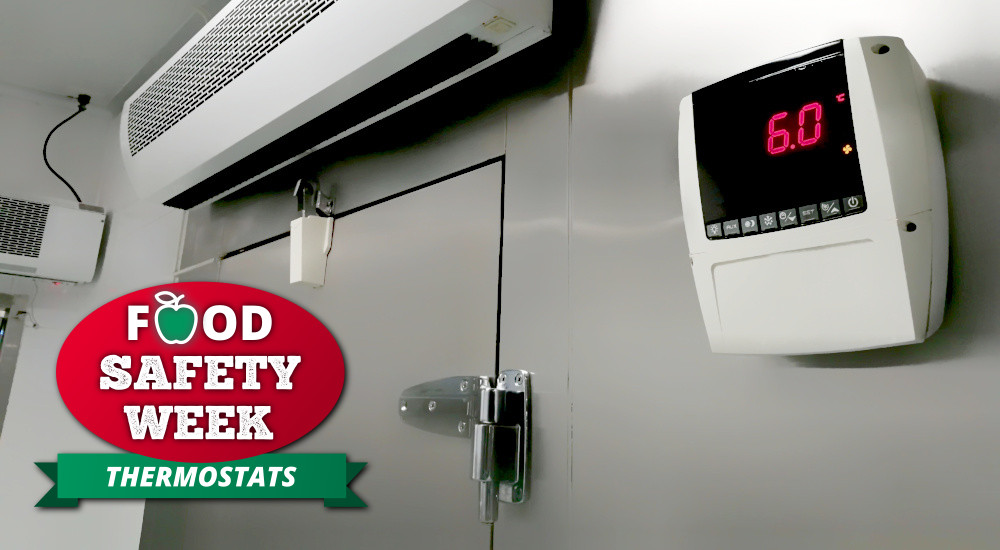Food Safety Month – Are My Commercial Kitchen Equipment Thermostats Accurate?

By – The Editor
Our first blog in our three-blog series focused on safe food storage in the event of a power outage in your commercial kitchen. In support of September being National Food Safety Education Month, our second blog focuses on the “cooking stage” of ensuring your foodservice operation is working with accurate temperatures in the cold and hot side of the operation.
Two of the riskiest aspects of food safety for commercial kitchens is food storage and proper cooking. Because your menu is based on a wide variety of ingredients, following the ideal temperature for food storage and preparation is key. Therefore, you need to be confident your commercial kitchen equipment thermostats are accurate. Here’s how.
The Right Temperature on the Cold Side
To hit the sweet spot for your commercial refrigerator, you should consider setting your temperature a few degrees lower than the recommended 41°F. Instead, aiming at about 38°F can meet the varied requirements for a wide assortment of foods. Keep in mind the top shelf tends to be the warmest in stand-alone refrigerators while the bottom shelves are cooler. So, within your refrigerator, you can see the bottom shelf be as low as 34°F while the top stays around 41°F.
You might consider organizing your refrigerator with foods requiring similar temperatures stored on the same shelves to take advantage of these variations. Also, walk-in units tend to run cooler than stand-alone units. They range from about 35°F near the door and 37° further in. Last but not least freezers should be kept at or below 0°F. If you are storing ice cream products the temperature will need to be at or below -10 degrees.
How to Maintain the Right Temperature
The most important component of your commercial refrigerator and freezer is arguably the thermostat. If your thermostat isn’t accurate, you have no way of confirming your food temperatures are safe. The safest way to ensure your thermostats are accurate therefore is to ensure your commercial appliance is operating efficiently. Regularly scheduled commercial freezer and refrigerator maintenance/repairs help ensure they are operating at ideal temperatures.
Professional foodservice repair technicians use a multimeter to read thermometers and check that they are working properly. This is important for commercial refrigerators and freezers, as the thermometers tend to be located close to the door. In busy kitchens, the doors are opened frequently which can cause uneven temperatures between the front and back of the unit, while also increasing the risk for temperatures to fluctuate.
Tip: A great backup to ensure your commercial freezer and refrigerator are working at the appropriate temperature is to add a shelf-hanging thermometer inside. It will help identify if you have a problem with the temperature.
Oven Thermostat Calibration
Cooking with the appropriate temperature to ensure food safety is of utmost importance on the hot side of a commercial kitchen. Commercial ovens have thermostats that must be properly calibrated to ensure accurate readings. This can be a complicated process. Many commercial kitchen teams choose to schedule a regular commercial oven maintenance/repair appointment to check the calibration and ensure the thermostat is accurate.
Did you know: Changes to cooking times and temperatures are required at elevations over 2,000 ft where water boils at 208F rather than 212F. Gas ovens also require changes as some may require smaller orifices.
If your commercial oven needs calibrating for higher elevation, then General Parts Group can help. Call to set an appointment or submit an online Book Service form.


